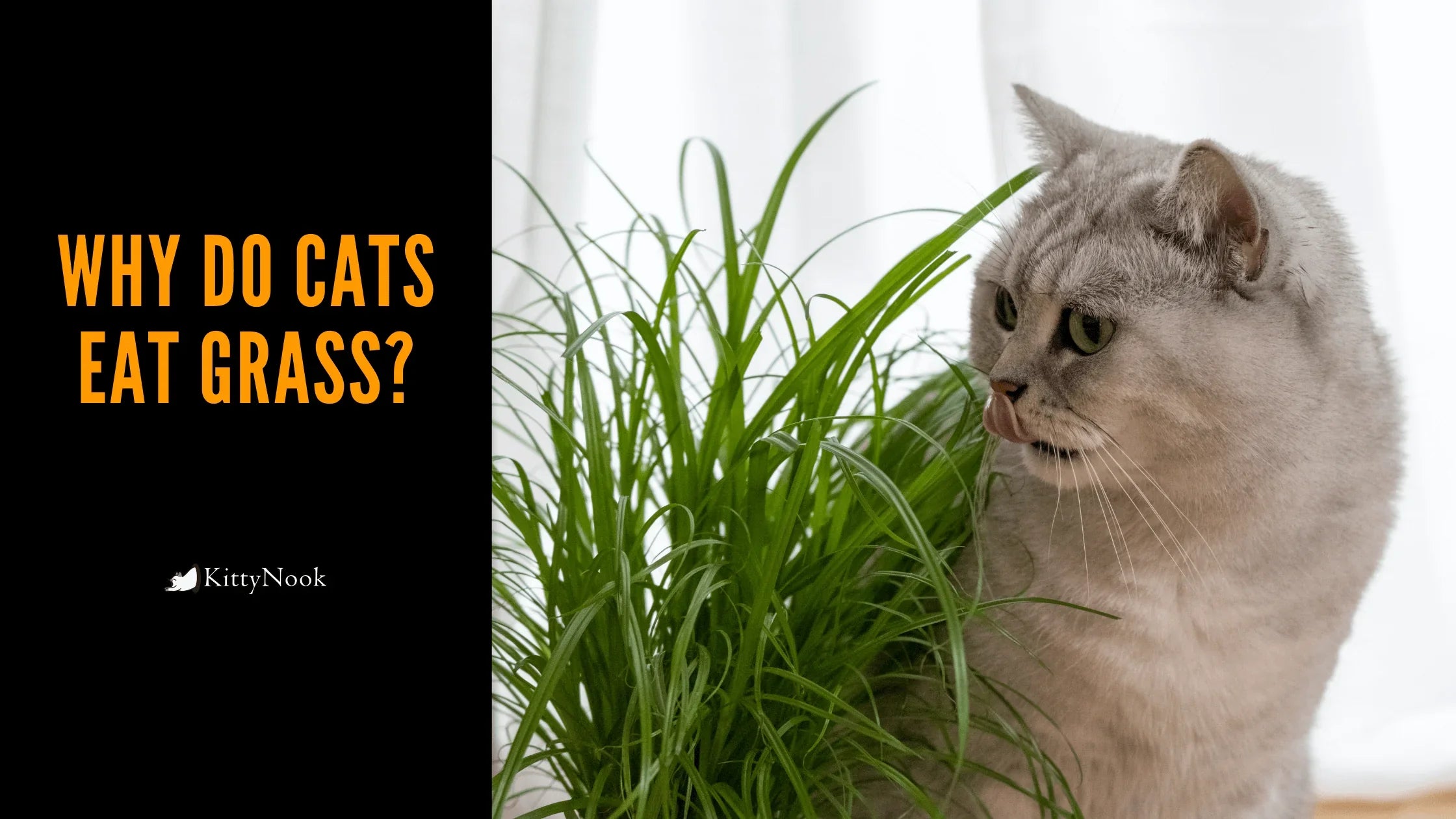Cats do a lot of weird things. Among the most bizarre is eating grass, only to throw it up at a later time. Perhaps now we know why.
Why Do Cats Eat Grass? Possible Theories

It matters not whether you own an indoor or outdoor cat; one thing is for certain: your furry friend has probably munched on some greenery more than once. While it could seem weird and worrying—especially when your cat throws up later on— it is a common behavior, and there's nothing to fret about. There is nothing to suggest that these greens will harm your feline. Furthermore, many experts think that munching on those green blades can be helpful for your cat.
Cats vomit when they eat grass since they lack the essential enzymes to digest the plant matter. Does this mean your cat likes to regurgitate? Well, while it's uncertain if cats enjoy the act, this chucking-up experience might eliminate all indigestible matter from the feline's gastrointestinal system, making it feel a lot much better. This is very important since cats in the wild eat their prey as is, fur and bones all.
It's in the juice. Just like mommy's milk, the juices in these greens consist of folic acid. This is a crucial vitamin for cats and help them manufacture hemoglobin, a protein that moves oxygen in the blood.
Nature's laxative. Another possible reason is that grass works as a natural laxative, counteracting any instances of indigestion. As a cat owner knows, felines frequently vomit and leave charming, wet hairballs around the home. However, when the fur gets deep into the digestive system, the cat needs a little assistance to pass it to the other ends. Call it intuition or instinct, but your feline knows that a little bit of greens may go a long way in cleaning its system and may also save you a trip to the vet.
Trace elements. Another theory is that felines might eat grass for some trace elements and essential nutrient like vitamins A and D. Grass also contains chlorophyll, which was a treatment for pain, infection, abscess, skin diseases, and anemia before the exploration of antibiotics. Plus, there's the benefit of consuming the breath cleansing chlorophyll.
What Do Researches Say?

Scientists in Norway surveyed more than 1000 cat owners on the Internet who had to spend at least 3 hours a day observing and socializing with their pet. As several feline moms and dads discovered, eating grass is exceptionally normal behavior: 70% of cats were caught in the act of eating grass at least six times in their lifetime, whereas only 11% were never observed to ingest any plant material.
Internet discussions on grass eating theorize that the action help cats in vomiting up when they feel ill. However, only 25% of grass eaters were observed to throw it up later, and 91% of respondents claimed their cat did not appear sick before taking a munch in the lawn.
Eating grass is an instinctual behavior and has many health benefits to felines, or at least, it used to. The theory based on research with chimpanzees and other wild animals is that grass chomping helps them expel intestinal parasites by making muscular tissues of the digestive tract work harder.
Today, our modern felines likely do not have these parasites anymore. Instead, the vomiting is simply an occasional byproduct of eating these greens, not the objective. The research authors argue that the act is likely a natural behavior inherited from their ancestors. However, the scientists did not test another assumption: that eating these greens help cats regurgitate hairballs. The researcher's suggestion to cat owners is to acquire or cultivate some indoor cat grass for their cats to munch on. This will give cats the chance to exercise this inherent behavior in a risk-free setting. And if your cat throws up afterward, you can take solace in knowing that it had not been done on purpose or out of spite.
What is Cat Grass? Is It Safe?

Not to be mistaken with catnip, which belongs to the mint family, cat grass is typically grown from barley, rye, wheat, or oat seeds. You will find a selection of cat grass packages at your local pet shop, including everything you need: seeds, soil, and a pot. All you'll have to do is water them and give them enough sunlight, and within one week, your cat will have its grass for a safe nibbling.
Cat grass is much safer than your neighbor's potentially pesticide-laced plants. It also gives your cat a healthier alternative to munching on outdoor grass, toxic plants, or flowers, many of which are harmful to cats. Talk with your veterinarian before you bring any flowers or plants, including cat grass kits, into your home.
How to Grow Cat Grass

Your cat grass package will likely come with easy-to-follow directions, but below are some fundamental ideas for taking care of and growing your cat grass:
- Before growing, the seeds must be kept damp but never soaked. As soon as sprouts show up, use less water.
- Allow 3 to 7 days for seeds to sprout.
- The cat grass will be ready for your feline friend to eat in 1 to 2 weeks after sprouting or when it has grown four inches. Typically, cat grass will last you up to 3 weeks.
- Continue to keep the cat grass in a sunny spot at home and water daily with a spray bottle.
- Do not over water, as this will trigger mold and mildew.
- Let your cat eat straight from the container.
- When the grass starts to wilt or change its color, it's time to plant a new pot!
We hope this blog helped answer some of your questions about cat grass. Tell us about your experience! Do you grow cat grass at home?
Do you have other topics about cats that you want us to write about? Tell us in the comments below!





















